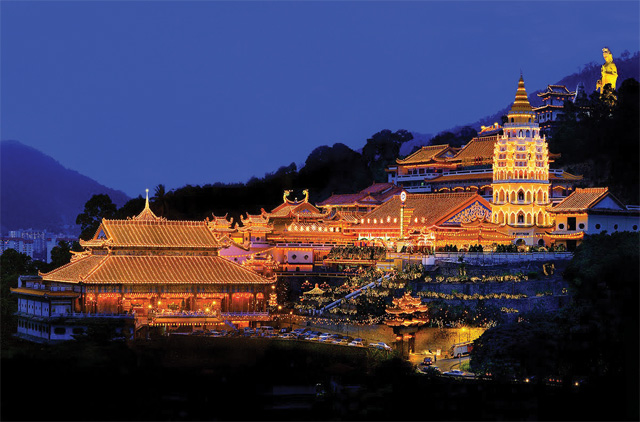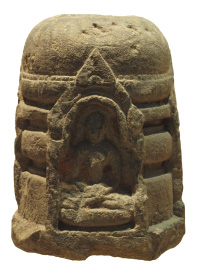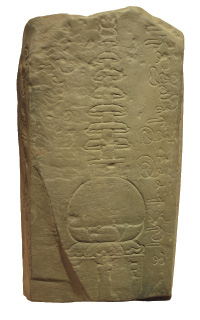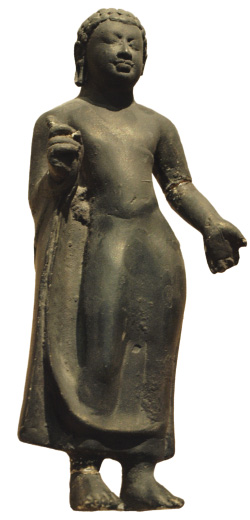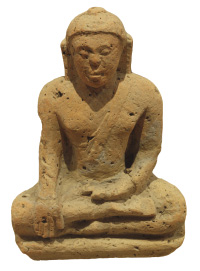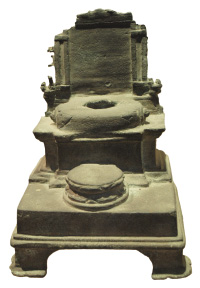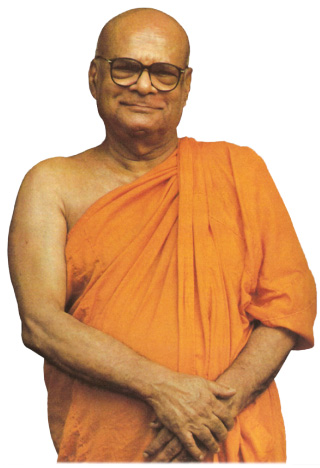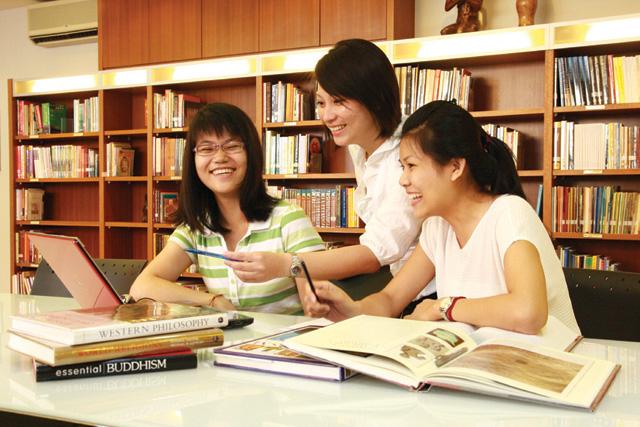Buddhism in Malaysia
Buddhism in Malaysia
“The Buddha had exercised a profound influence on human civilization, and his teachings and example had provided the ethical and moral underpinnings of many societies. His teachings were based on the law of release from suffering, leading to spiritual enlightenment.”
United Nations
General Assembly
54th Meeting, 2000.
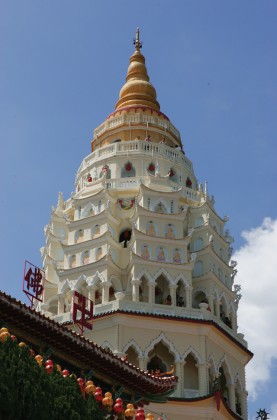
Kek Lok Si Temple, Penang
Pagoda of 10,000 Buddhas
The Kek Lok Si Temple’s main seven-storey pagoda – the Pagoda of 10,000 Buddhas – was opened in 1930. This famous landmark incorporated both Mahayana and Theravada architectural elements brilliantly – with an octagonal Chinese-style base, a Thai-style mid-section, and crowned by a Burmese-style stupa – reflecting the three predominant Buddhist traditions in Penang at that period.
Buddhism is the second largest religious denomination in Malaysia after Islam. There are approximately 5.4 million Buddhist adherents in the country, comprising 19.2% of our population of 28.3 million (January 2011 estimates). The majority of them are ethnic Chinese who follow the Mahayana tradition.
Most Mahayana Buddhist temples in Malaysia adopt the classical ‘Chinese temple’ architectural style. The Mahayanists conduct their services in Mandarin and in various other Chinese dialects, although some urban-area temples have been preaching in English. The practice among the majority ethnic Chinese who profess themselves as Buddhists is actually a mixture of Buddhism and Chinese beliefs and traditions.
Penang
The famous Kek Lok Si Temple was built over a century ago. The vast temple complex is among the largest Buddhist monasteries in Malaysia and Southeast Asia.
“…in these days of challenge, it is fitting that men of goodwill, irrespective of race or creed, should ponder on the teachings of Lord Buddha, which lead us to the path of enlightenment and peace…”
Tunku Abdul Rahman Putra Al-Haj
Wesak Day Message, 1956
Theravada Buddhists include ethnic Chinese, Siamese (or Thais), and smaller numbers of Burmese, Sinhalese and Indians. The many ethnic groups of Theravadins usually establish temples in the style of their own traditions, and catering mainly to their own indigenous groups. The ethnic Thais for example establish ‘wats‘ or Thai-style temples, have resident Thai monks, and conduct their rituals in Thai Language.
The Sinhalese (Sri Lankan Buddhists) migrated to then Malaya a century ago when both Malaya and Ceylon were under British colonial rule. They brought with them Sinhalese Buddhism with its unique traditions that survive to this day in a few Sri Lankan viharas (temples) dotting the country.
Kuala Lumpur
Colourful and joyous Wesak Celebration at the Buddhist Maha Vihara. Built in 1894, it is the largest Sri Lankan Monastery in Malaysia.
In recognition of the Malaysian Buddhist community’s contribution towards nation building, public welfare and social harmony, the Wesak Full-moon Day was officially declared a public holiday in 1962 throughout the newly-independent Federation of Malaya.
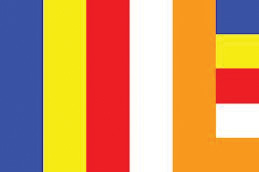
The International Buddhist Flag was adopted by Buddhists world-wide in 1950 as the common symbol of their faith. It is commonly hoisted on Wesak Day and important Buddhist events.
Artifacts
Archaeological evidence, as well as official Chinese imperial records and Indian sources, confirm the existence of several Hindu-Buddhist kingdoms in Malaysia from the 3rd to 13th Centuries CE. The earliest of these Indianized kingdoms was probably Kedah-Langkasuka in northern Malay Peninsula.
Kedah, lying half-way between China and the Middle-east, was an important entréport in the “Maritime Silk-route”. The foundations of ancient stupas have been uncovered in Sungai Mas. The famous Chinese traveler-monk, Yi Jing, stopped over there on his sea voyage to Nalanda, India in 671 CE. Kedah later became a vassal of Srivijaya from the 7th to 11th Centuries CE. The Maharajas of Srivijaya were Buddhists, and they were responsible for building many of the monuments in Sumatra, Peninsular Malaysia, and Java, including the famous Candi Borobudur (in Central Java).
In 607CE, a Chinese embassy of the Sui Dynasty recorded the presence of the Buddhist kingdom of Che-tu (literally, “red-earth”). Located in the interiors of modern-day Kelantan, the kingdom supplied gold and jungle produce to Langkasuka and Champa (Southern Vietnam). Terracotta figurines of Buddhas and Bodhisattvas from the Mahayana School were found in the districts of Tanah Merah and Gua Musang in Kelantan.
Stone Buddha Image
Carved Granite Stone
Bujang Valley Archaeological Museum
The style of this artifact possibly dates it to the 6th or 7th Century CE. This well-crafted tablet was possibly made for temple decoration or as votive offering to the temple from devotees.
Buddhagupta Inscription
Carved Granite stone. 5th Century CE
Bujang Valley Archaeological Museum
Sanskrit inscription in Pallava Script. It tells of a trader named Buddhagupta giving thanks for his safe voyage from afar. Note the seven-tiered Chhattra (parasol) honouring the Buddha’s Doctrine.
In the rich archaeological site of Bujang Valley in Kedah, researchers have uncovered foundations of Buddhist temples and stupas possibly dating from 110CE. That would make them the earliest archaeological evidence of Buddhist presence in maritime Southeast-Asia (Nusantara).
Ruins of an ancient Stupa unearthed in Bujang Valley, Kedah.
Objects unearthed from this site include beads, pottery and coins, which are useful indicators of the time-line and trade patterns in ancient times. The Bujang Valley, Lower Perak and interiors of Kelantan yielded rich Buddhist artifacts such as sun-baked clay votive tablets, bronze and terracotta images of Buddhas and Bodhisattvas, and occasionally, stone inscriptions by local rulers and travelers.
The stone inscriptions found in Bujang Valley are particularly important. They are mostly in Sanskrit and written with the Pallava script. The ‘Buddhagupta Inscription‘ (dating to the 5th Century CE) shows that trade was robust between Kedah and the Indian subcontinent. It also indicates active religious exchanges between the two lands, and Buddhism being the predominant faith in the region then.
Leaders & Pioneers
Ven Dr. K Sri Dhammananda Nayaka Thera (1918 – 2006) served as the Senior-most Sri Lankan Monk in Malaysia, from 1965 to 2006.
Malaysia is blessed with many visionary pioneer Buddhist leaders from both Theravada and Mahayana traditions. The most well-known Theravada missionary monk in Malaysia was Venerable Dr. Kirinde Sri Dhammananda Nayaka Thera. The Venerable came from Sri Lanka to Malaya in 1952, and began his tireless efforts to propagate Dhamma. He gave numerous talks throughout the country and authored more than 50 publications on Buddhism. His hard work paid off handsomely as it transformed how Buddhism was perceived and practised in Malaysia – from a backward, antiquated, traditional belief, to a contemporary, proactive religion suited to modern needs and lifestyles.
The Mahayana tradition also produced many illustrious monks that served the Buddha-Sasana assiduously. They include the late Venerables Chuk Mor and Seck Kim Beng. Both were born and ordained in mainland China, but came to serve the Chinese migrant population in Malaysia.
Malaysian Contribution to Buddhism
Although Malaysia is not a Buddhist country, it is nevertheless contributing immensely to Dharma propagation throughout the world. Malaysian devotees have assisted in the building of many temples and learning institutions in foreign countries. Malaysian organizations are also publishing and reprinting numerous Dharma books for free distribution to Buddhist communities locally and abroad.
Due to a shortage of Buddhist monks and nuns in Malaysia, the laity has taken up a major role in spear-heading the growth of Buddhism in the country. Laymen and laywomen are actively teaching Dharma and meditation. Buddhist Youth groups are also dynamic and frequently engage in Dharma learning and propagation.
Several World Buddhist Conferences and other international congregations have been held in recent years in Malaysia, reflective of our country’s religious tolerance and harmony.
Quick facts on Buddhism
Buddhism is a noble way of life based upon the teachings of Gautama Buddha, our Enlightened Teacher.
The Buddha taught that Life entails suffering, but suffering can be overcome with right effort.
The Way to overcome suffering is the ‘Middle-Path‘ – the cultivation of morality, mental development, and the attainment of insightful wisdom.
Buddhists observe Wesak Full-moon Day in May to mark 3 important occasions – the Buddha’s birth in 623BCE, His Enlightenment in 588BCE, and His passing away (Parinibbāna) in 543BCE.
On Wesak Day, Buddhists throng temples to offer alms and to serve the community. Wesak Day can be observed meaningfully with heightened mindfulness, compassion, and thoughtful acts of kindness.
“Avoid all evil; cultivate every good; purify one’s own mind. This is the teaching of all Buddhas.” – Dhammapada verse 183.

It has been 2,600 years since the Buddha attained Enlightenment in 588 BCE. Today, Buddhism is still a potent and dynamic force for personal and social transformation. Its compassionate philosophy and wholesome way of life is increasingly being practised and appreciated by millions of people around the world.
The aim of this noble Buddhist way of life is to live with wisdom and in harmony with all beings, to help relieve the suffering of others, and ultimately, to attain liberation from all strife and afflictions.


